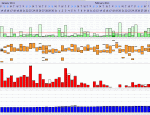TheLankyLefty wrote:
PAP therapy is a prescription. Giving out the software is akin to giving every pain management patient an Rx pad so they can write their own Vidodin prescriptions. No, it's not some ploy by "big business." The truth of that is that ResMed and Respironics would LOVE to sell everyone the software. But then why do I have a feeling people would complain that they are being charged for it?
Talk about straw man arguments.
First and foremost, there's a lot more to pain management than handing out prescriptions for Vicodin. And providing software is not the same as providing a prescription pad. You do know that PR sells the Encore Viewer software
as patient software designed to help patients monitor their own progress with therapy; Encore Viewer is available without a prescription and you can buy it from many on-line cpap suppliers such as our host, cpap.com. You can read about it at
http://encoreviewer.respironics.com/ . DeVilbass makes the SmartCode available to users as well as DMES; when the user goes to the appropriate web page and enters his/her SmartCode, s/he sees a full efficacy data report for the data the machine recorded. You can read about this on pages 15 and 18 of the
USER manual (available at
http://www.devilbisshealthcare.com/file ... 53RevA.pdf) and on the DeVilbass website at
http://www.devilbisshealthcare.com/prod ... /smartcode . And heck, even Resmed used to allow DMEs sell ResScan to patients back when the S8 series were the latest, greatest PAP machines around.
Second, yes, PAP is a prescription. But the better analogy is to diabetes management than prescription pain pills.
Diabetics are taught to monitor their condition carefully. And they are carefully taught how to properly make appropriate changes in their medication levels regarding both dosage and time of dosage based on their blood glucose readings and their diet. They are clearly informed of exactly what medicines are prescribed and what the dosage for each med is. And they are carefully taught about when they need to get back in touch with the doc because something is not working. And, notably, diabetics are not instructed to judge how well therapy is working based solely on how they feel, but to rely on the data. In other words, diabetics are provided proper patient education and support for managing their condition. The patients are encouraged to actively learn about their condition and their treatment. Patients are explicitly taught about the lifestyle changes that maybe needed to manage their condition and are encouraged to get the support they need for making those changes permanent. New diabetic patients are often given explicit information about live face-to-face support groups in the local area, and they are encouraged to be in close contact with their doctor's office if they have any questions about their treatment. And when they have questions, by and large those questions are treated seriously rather than being ignored. Now note: I know perfectly well that not all diabetics do a good job in managing their condition. But the presumption by the medical community is that a well educated diabetes patient and a well supported diabetes patient is more apt to properly monitor and manage their condition on a day to day basis.
Like diabetes, OSA is a life-long chronic condition that will get worse if left untreated or badly treated. LIke diabetes, untreated OSA affects the body in numerous negative ways and can lead to a variety of other health problems. Like diabetes, managing OSA on a daily basis is the key to prevent it from getting worse and from causing multiple other health problems. And like diabetes, the treatment for managing OSA requires real effort on the patient's part, is not always comfortable, and can involve serious, substantial lifestyle changes. But the typical OSA patient's experience is one that includes little or no patient education or support and all too often involves docs, DMEs and, yes RTs, that either ignore or minimize the questions the patient has concerning the day to day efficacy of their prescribed treatment and the day to day difficulties and life style changes needed to make a serious effort at making PAP therapy actually work.
The standard OSA patient completes the diagnostic PSG, gets a phone call to come back for the titration study, and then is handed a machine and a mask from a DME they did not chose for themselves. And they're told, "Use the machine every night---preferably all night. But at the very least, you need use it for at least four hours every night for compliance purposes." That compliance rule is more important to the DME than the patient, of course, since it's what makes the insurance company pay the DME for the machine. And all too frequently, the machine the DME provides us gives us, the OSA patient no useful feedback about anything (except for hours used) concerning our therapy. As for care from the sleep doc's office? There may or may not be a consultation with the sleep doc who prescribed the machine. All too often, patient education about OSA is nothing more than a statement along the lines of "You stop breathing
x times an hour and your O2 level dropped to
y% during the night. If you don't use a CPAP, you'll likely develop serious heart disease or have a stroke. So you need to start CPAP now."
And when we run into problems in the early going? The standard pat answers from the doc, the PAs, the RTs, and the DMEs are either "Give it more time" or "You're probably leaking because of mouth breathing. See if a chin strap or full face mask helps". Because even if there is some data recorded by our machine, none of these folks is likely to actually look at anything beyond "hours of use." And when we bring up problems with adjustment, that lack of any data puts us, the patients, in a difficult place when we know we are using the machine all night, every night; and we are not mouth breathers; and we're not feeling any better and are often feeling worse.
For example, the on-board leak data on the PR System One machine is outrageously useless. (I say that as a someone with a PhD in mathematics and who understands the full mathematical shortcomings of providing nothing but a seven day "Percent time in Large Leak" figure where "Large Leak" is left undefined.) Without the software that shows the actual leak graph for the full night, we have no way to actually tell if we've got some moderately serious leak problems that need to be dealt with. And if we don't have any real problems with leaks, we also have no way to convince an RT or doc that when we say our on-going problems are not leak related, we really mean that we know we're not mouth breathing and we know we're not somehow springing serious leaks in the middle of the night that aren't waking us up.
With the software, the machine's nightly AHIs and longer term AHIs, no matter how "dirty" that data actually is, do allow a patient to tell that something might be wrong with the pressure settings: If a PAPer is getting double digit AHIs night after night AND s/he continues to feel lousy day after day, then there's something wrong with the therapy. And a pressure adjustment just might be a reasonable thing for the doc to order. But without being able to show the doc (who ultimately decides the pressure level) that the data indicates something is genuinely amiss, patients in this situation usually are told over and over to just give it more time. So how long is enough time to give it? More than a week? Certainly. More than a month? Probably. More than three months? Maybe. More than six months? More than a year? Just how long should we keep telling the doc, "I feel as bad (or worse) than I did before starting PAP," before we start pressing hard about whether there might be something wrong with our prescribed pressure setting in particular or our therapy in general? When is it reasonable for the patient to suggest that someone somehow figure out a way to verify that the machine's settings really are appropriately treating the OSA in terms of preventing the vast majority of respiratory events from occuring and that the night time O2 levels are staying above 90%?
And heck, many newbies are not told anything about their prescribed pressure setting. Is there
any other chronic medical condition where the patient is routinely NOT informed about the entire prescription? And all too often when we ask for a copy of our prescription, we're greeted with incredulous folks telling us, "You don't need to know the pressure setting. Just get the machine and use it." Which is alarming if you think about it: Suppose you are traveling and something catastrophic happens to the machine. Without that prescription how the heck are you supposed to get a new machine or a loaner for the duration of trip? And if you're lucky enough to convince a sympathetic DME that you need the machine, how are they to know what to set it at?
And even more alarming? Many RTs routinely set up the PAP machines in such a way as to lock the patient out of changing settings that are designed as
patient comfort settings and that according to the manufacturer should increase patient comfort (and hence willingness to use the machine) without affecting therapy. So we see newbies with ramps set up to go from 4cm to 14cm in 10 minutes who can not alter the beginning ramp pressure (on the Resmed machines) or the ramp time (on the PR machines) to increase their comfort when trying to get to sleep at the beginning of the night. We see newbies who can not turn exhale relief on or off. Or test a different setting to see if they're more comfortable at "2" than they are at "3".
Now LankyLeft, don't get me wrong: I do think you care about your patients. When I visited your web site, I did see evidence that you work hard to make sure that your particular patients stand a very good chance at becoming successful PAPers---which entails much more than just using the damn machine for four hours every night.
It's just that over here and in this thread in particular, you've said things that simply do NOT match the spirit of much of your own website. Over here, and in this thread, you have explicitly said things that lead us to conclude that you'd be happy as an RT if patients didn't have any access to any of their data. And since this forum is full of folks who feel like they've had to figure it out all by themselves, it's not hard to see why these comments have elicited the response they have.












